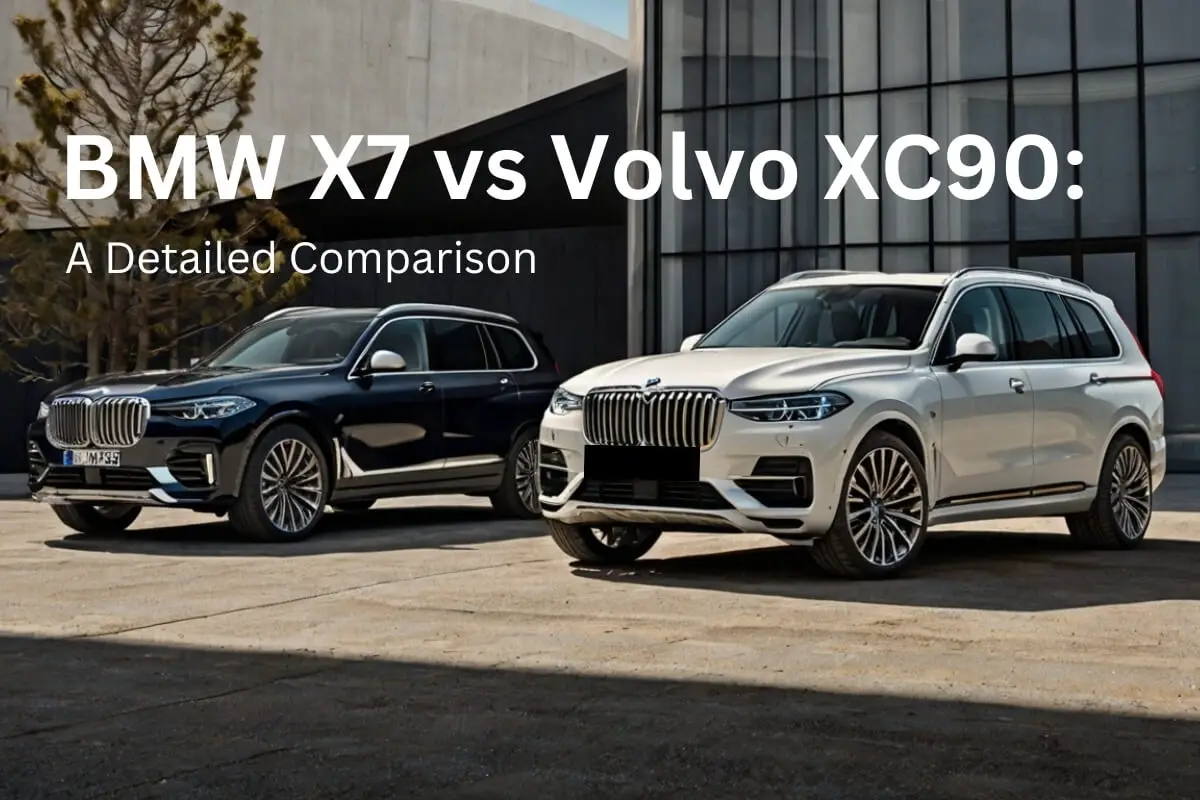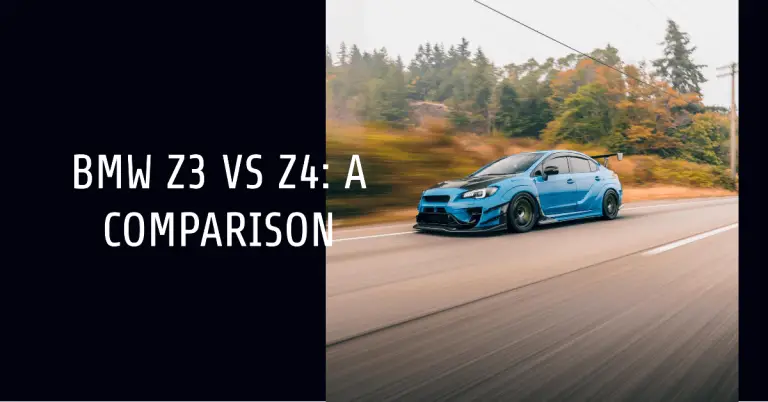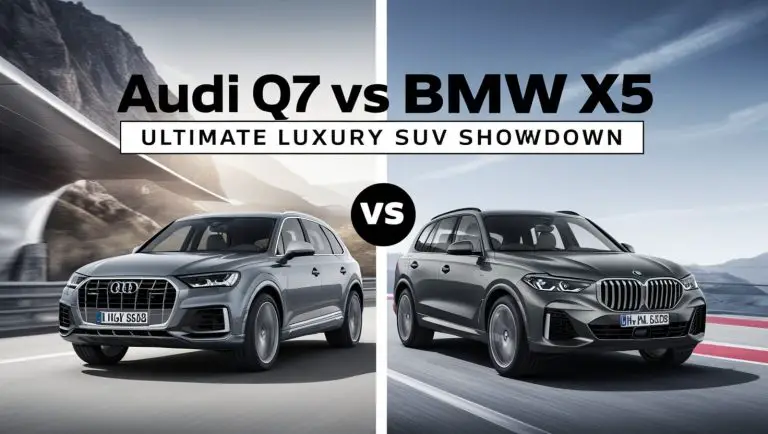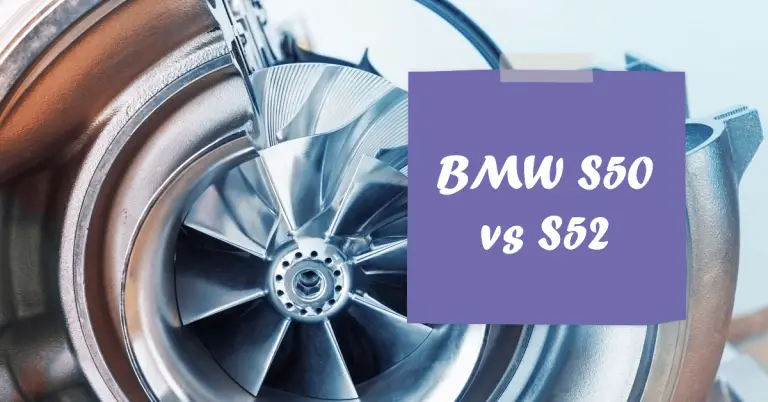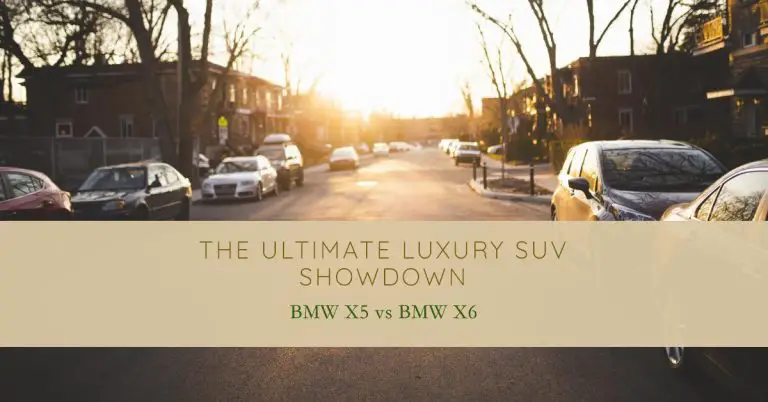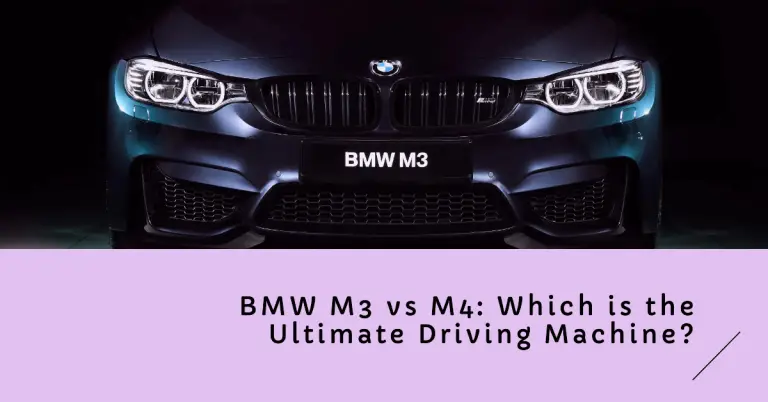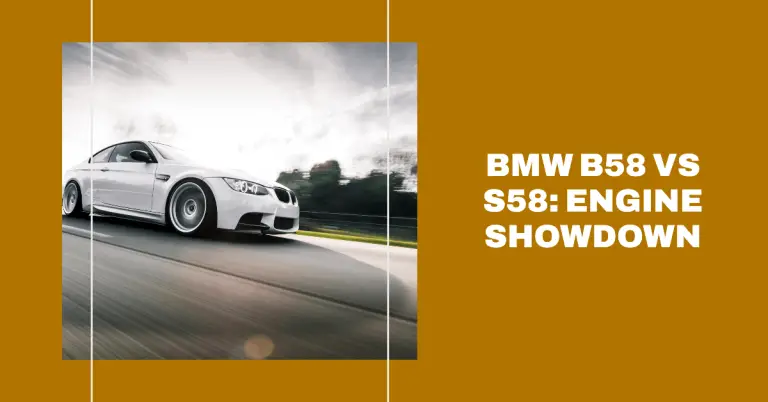BMW X7 vs Volvo XC90: A Detailed Comparison
Overview of BMW X7 and Volvo XC90
Introduction to BMW X7
The BMW X7 is a large luxury SUV that stands out for its opulence, performance, and advanced technology. Launched to compete in the high-end SUV market, the X7 combines BMW’s renowned driving dynamics with the space and comfort of a full-sized SUV. It offers seating for up to seven passengers and boasts a variety of powerful engine options, making it a popular choice for those who demand both luxury and performance in their vehicles.
Introduction to Volvo XC90
The Volvo XC90 is a distinguished luxury SUV that emphasizes safety, elegance, and Scandinavian design. Known for its high safety ratings and innovative features, the XC90 offers a serene and comfortable driving experience. It comes with a range of efficient engine options, including a plug-in hybrid variant, and provides ample space for families. The XC90’s interior is crafted with high-quality materials and designed with a minimalist aesthetic, reflecting Volvo’s commitment to style and functionality.
Performance and Powertrain
BMW X7 Engine Options and Performance
The BMW X7 offers several powerful engine options to cater to different driving preferences. The base model features a 3.0-liter turbocharged inline-six engine, producing 335 horsepower. This engine allows the X7 to accelerate from 0 to 60 mph in just 5.8 seconds. For those seeking more power, the M50i variant is equipped with a 4.4-liter turbocharged V8 engine, generating 523 horsepower and achieving a 0 to 60 mph time of 4.5 seconds. Despite its size, the X7 delivers impressive performance and agility, thanks to its advanced suspension system and precise steering.
Volvo XC90 Engine Options and Performance
The Volvo XC90 offers a range of engine options that balance performance with efficiency. The base T5 model comes with a 2.0-liter turbocharged four-cylinder engine, producing 250 horsepower and achieving an EPA-estimated 21 MPG city and 30 MPG highway. The T6 variant adds a supercharger, increasing the output to 316 horsepower and improving acceleration. For eco-conscious drivers, the XC90 Recharge Plug-In Hybrid combines a turbocharged and supercharged engine with an electric motor, producing a total of 455 horsepower. This setup offers an EPA-estimated 55 MPGe and can accelerate from 0 to 60 mph in 5 seconds.
Interior and Comfort
BMW X7 Interior Features
The interior of the BMW X7 exudes luxury with its high-quality materials and sophisticated design. The cabin is spacious, providing ample legroom and headroom for all passengers. Standard features include a panoramic sunroof, four-zone climate control, and a Harman Kardon surround sound system. The iDrive infotainment system is intuitive, offering a large touchscreen, Apple CarPlay, Android Auto, and a voice-activated assistant. Optional upgrades include a rear-seat entertainment system, heated and cooled cup holders, and a Bowers & Wilkins Diamond surround sound system, enhancing the luxurious feel of the X7.
Volvo XC90 Interior Features
The Volvo XC90’s interior is a showcase of Scandinavian design, featuring minimalist aesthetics and premium materials. The cabin is designed to offer comfort and functionality, with standard features such as a panoramic sunroof, leather upholstery, and a 12.3-inch digital driver display. The Sensus infotainment system is user-friendly, providing a touchscreen interface, Apple CarPlay, Android Auto, and navigation. The XC90 also offers an optional Bowers & Wilkins sound system, rear-seat entertainment, and ventilated front seats, ensuring a comfortable and enjoyable driving experience.
Space and Practicality
Seating and Cargo Space in BMW X7
The BMW X7 offers flexible seating configurations, accommodating up to seven passengers. The second row can be equipped with either a bench seat or captain’s chairs, providing versatility based on passenger needs. The X7 offers 12.8 cubic feet of cargo space behind the third row, which expands to 48.6 cubic feet with the third row folded down. With both the second and third rows folded, the X7 provides a generous 90
BMW X7 vs Volvo XC90: A Detailed Comparison
Overview of BMW X7 and Volvo XC90
Introduction to BMW X7
The BMW X7 is a luxurious full-sized SUV that stands out in the competitive market with its blend of opulence, performance, and cutting-edge technology. Since its introduction, the X7 has been a benchmark for those seeking a high-end SUV experience. It offers a range of powerful engines and advanced features, making it a top choice for drivers who demand the best in luxury and performance.
Introduction to Volvo XC90
The Volvo XC90 is a premium SUV known for its emphasis on safety, elegant design, and Scandinavian simplicity. This SUV offers a comfortable and serene driving experience, packed with advanced safety features and a range of efficient powertrains, including a plug-in hybrid option. The XC90’s interior is designed with high-quality materials and minimalist aesthetics, providing a sophisticated environment for drivers and passengers alike.
Performance and Powertrain
BMW X7 Engine Options and Performance
The BMW X7 comes with several engine options tailored to different driving preferences. The base model features a 3.0-liter turbocharged inline-six engine that delivers 335 horsepower and accelerates from 0 to 60 mph in 5.8 seconds. For those desiring more power, the M50i model boasts a 4.4-liter turbocharged V8 engine, producing an impressive 523 horsepower and achieving a 0 to 60 mph time of just 4.5 seconds. Despite its size, the X7 offers agile handling and a smooth ride, thanks to its advanced suspension system and precise steering.
Volvo XC90 Engine Options and Performance
The Volvo XC90 offers a variety of powertrains, balancing performance and efficiency. The base T5 model features a 2.0-liter turbocharged four-cylinder engine that generates 250 horsepower and achieves an EPA-estimated 21 MPG city and 30 MPG highway. The T6 variant adds a supercharger, increasing the output to 316 horsepower and offering a more dynamic driving experience. The XC90 Recharge Plug-In Hybrid combines a turbocharged and supercharged engine with an electric motor, producing a total of 455 horsepower and delivering an impressive EPA-estimated 55 MPGe. This variant can accelerate from 0 to 60 mph in just 5 seconds.
Interior and Comfort
BMW X7 Interior Features
The interior of the BMW X7 is a testament to luxury and sophistication. It features high-quality materials, spacious seating, and a host of advanced technologies. Standard features include a panoramic sunroof, four-zone climate control, and a Harman Kardon surround sound system. The X7’s iDrive infotainment system is user-friendly, offering a large touchscreen display, Apple CarPlay, Android Auto, and voice controls. Optional upgrades include a rear-seat entertainment system, heated and cooled cup holders, and a Bowers & Wilkins Diamond surround sound system, enhancing the premium experience.
Volvo XC90 Interior Features
The Volvo XC90’s interior is designed with a focus on comfort and simplicity, featuring premium materials and a minimalist design. Standard features include a panoramic sunroof, leather upholstery, and a 12.3-inch digital driver display. The Sensus infotainment system provides a responsive touchscreen interface, Apple CarPlay, Android Auto, and navigation. Optional features include a Bowers & Wilkins premium sound system, rear-seat entertainment, and ventilated front seats. The XC90’s cabin is not only luxurious but also practical, offering ample space and intuitive controls.
Space and Practicality
Seating and Cargo Space in BMW X7
The BMW X7 offers a versatile seating arrangement, with options for a bench seat or captain’s chairs in the second row, accommodating up to seven passengers. The third row is spacious enough for adults, making it a true seven-seater. The X7 provides 12.8 cubic feet of cargo space behind the third row, which expands to 48.6 cubic feet with the third row folded down. With both the second and third rows folded, the X7 offers a generous 90.4 cubic feet of cargo space, making it ideal for families and road trips.
Seating and Cargo Space in Volvo XC90
The Volvo XC90 also provides flexible seating configurations, with a standard layout that seats up to seven passengers. The second row can slide and recline, enhancing comfort and accessibility to the third row. The XC90 offers 12.6 cubic feet of cargo space behind the third row, expanding to 49.6 cubic feet with the third row folded down. With both the second and third rows folded, the XC90 provides up to 85.7 cubic feet of cargo space. This versatility makes it a practical choice for families and those who need extra storage space.
Technology and Infotainment
BMW X7 Technological Features
The BMW X7 is packed with advanced technology and infotainment features designed to enhance the driving experience. The iDrive infotainment system features a large touchscreen, voice control, and seamless smartphone integration through Apple CarPlay and Android Auto. The standard Harman Kardon sound system delivers high-quality audio, while the optional Bowers & Wilkins Diamond surround sound system offers an even more immersive experience. Additional tech features include a Wi-Fi hotspot, wireless charging, and a suite of advanced driver assistance systems such as adaptive cruise control, lane-keeping assist, and a 360-degree camera system.
Volvo XC90 Technological Features
The Volvo XC90 also boasts an array of advanced technological features, centered around the intuitive Sensus infotainment system. This system includes a responsive touchscreen, Apple CarPlay, Android Auto, and integrated navigation. The XC90 offers a high-quality standard audio system, with the option to upgrade to a premium Bowers & Wilkins sound system. Standard driver assistance features include adaptive cruise control, lane-keeping assist, and a pilot assist semi-autonomous driving system. The XC90 also features a 360-degree camera, blind-spot monitoring, and rear cross-traffic alert, ensuring a safe and connected driving experience.
Driving Experience
On-Road Performance of BMW X7
The BMW X7 offers an engaging and refined driving experience, characterized by its powerful engines and sophisticated suspension system. The base 3.0-liter turbocharged engine provides ample power for daily driving, while the M50i’s 4.4-liter V8 delivers thrilling acceleration and performance. The X7’s air suspension adapts to different driving conditions, providing a smooth ride on highways and precise handling on winding roads. The X7’s steering is responsive, offering a direct and confident feel that enhances the driving experience.
On-Road Performance of Volvo XC90
The Volvo XC90 provides a comfortable and composed driving experience, with a focus on safety and efficiency. The base T5 engine offers sufficient power for everyday use, while the T6 variant provides a more dynamic performance with its additional supercharger. The Recharge Plug-In Hybrid variant combines strong acceleration with impressive fuel efficiency, making it an excellent choice for eco-conscious drivers. The XC90’s suspension system is tuned for comfort, absorbing road imperfections and providing a smooth ride. The steering is light and precise, making the XC90 easy to maneuver in various driving conditions.
Safety and Reliability
BMW X7 Safety Features
The BMW X7 is equipped with a comprehensive suite of safety features designed to protect occupants and prevent accidents. Standard safety features include adaptive cruise control, front and rear parking sensors, a rearview camera, blind-spot monitoring, forward collision warning, and lane departure warning. The X7 also offers advanced driver assistance systems such as automatic emergency braking, lane-keeping assist, and a 360-degree camera system. While the X7 has not received an IIHS rating, it is built with BMW’s commitment to safety and engineering excellence.
Volvo XC90 Safety Features
The Volvo XC90 is renowned for its safety, earning the IIHS Top Safety Pick+ award. Standard safety features include adaptive cruise control, lane-keeping assist, blind-spot monitoring, and a forward collision warning with automatic emergency braking. The XC90 also offers advanced safety technologies such as Pilot Assist, a semi-autonomous driving system that provides steering assistance and helps maintain a safe distance from other vehicles. The 360-degree camera system enhances visibility, making parking and maneuvering easier. Volvo’s dedication to safety ensures that the XC90 provides a secure and confident driving experience.
Pricing and Value
Cost of Ownership for BMW X7
The BMW X7 is positioned as a premium luxury SUV, with a starting price that reflects its high-end features and performance. The base model starts at around $75,000, while the more powerful M50i variant can exceed $100,000 with optional features. The X7’s higher price tag includes advanced technology, luxurious materials, and superior performance. However, potential buyers should also consider the higher maintenance and repair costs associated with luxury vehicles. Despite the higher initial investment, the X7 offers exceptional value for those seeking a top-tier luxury SUV.
Cost of Ownership for Volvo XC90
The Volvo XC90 offers a more affordable entry into the luxury SUV market, with a starting price around $50,000. The T6 and Recharge Plug-In Hybrid variants are priced higher, reflecting their additional performance and technology features. The XC90’s pricing is competitive, considering its advanced safety features, high-quality interior, and efficient powertrains. Maintenance and repair costs for the XC90 are generally lower than those for the BMW X7, making it a more economical choice in the long run. The XC90 provides excellent value for buyers seeking a luxurious and safe SUV without the higher price tag.
Additional Sections
Fuel Efficiency Comparison
Both the BMW X7 and Volvo XC90 offer different levels of fuel efficiency, depending on the engine and configuration. The BMW X7’s base model provides an EPA-estimated 19 MPG city and 24 MPG highway, while the M50i variant offers 15 MPG city and 21 MPG highway. In contrast, the Volvo XC90’s base model delivers slightly better fuel efficiency, with an EPA-estimated 21 MPG city and 30 MPG highway. The plug-in hybrid version of the XC90, known as the T8, further enhances fuel efficiency with an estimated 27 MPG combined and up to 58 MPGe when factoring in electric-only driving.
Interior and Comfort
When it comes to interior quality and comfort, both the BMW X7 and Volvo XC90 excel in different ways. The BMW X7 boasts a luxurious cabin with high-quality materials, including leather upholstery, wood trim, and customizable ambient lighting. The seating is spacious and comfortable, with options for both six- and seven-passenger configurations. Advanced features like heated and ventilated seats, a panoramic sunroof, and a premium sound system enhance the overall driving experience.
The Volvo XC90, on the other hand, is known for its minimalist Scandinavian design, which exudes elegance and simplicity. The materials used are equally premium, with options for leather, real wood, and metal accents. The seats are ergonomically designed to provide maximum comfort, and the third row is more spacious than that of the X7. The XC90 also includes advanced features such as a touchscreen infotainment system, a high-quality audio system, and a host of driver-assistance technologies.
Performance and Handling
Performance and handling are key aspects where these two luxury SUVs diverge significantly. The BMW X7 offers a range of powerful engines, starting with a turbocharged inline-six that produces 335 horsepower, and going up to the M50i’s 523-horsepower twin-turbo V8. This provides the X7 with brisk acceleration and a dynamic driving experience, especially for a vehicle of its size. The X7 also features adaptive suspension and an all-wheel-drive system that enhance its handling and ride comfort.
In comparison, the Volvo XC90 prioritizes a balanced and comfortable ride over outright performance. Its base engine is a turbocharged four-cylinder that produces 250 horsepower, with a more powerful option available in the T6 model, which adds a supercharger for a total of 316 horsepower. The T8 plug-in hybrid combines the gasoline engine with an electric motor for a total output of 400 horsepower. The XC90’s handling is composed and refined, making it well-suited for long-distance cruising and everyday driving.
Technology and Features
Both SUVs are packed with advanced technology and features. The BMW X7 comes with the iDrive infotainment system, which includes a large touchscreen, a digital instrument cluster, navigation, Apple CarPlay, and Android Auto. Additional tech features include a Wi-Fi hotspot, wireless charging, and a suite of driver-assistance features like adaptive cruise control, lane departure warning, and blind-spot monitoring.
The Volvo XC90 features the Sensus infotainment system, which also includes a large touchscreen with navigation, Apple CarPlay, and Android Auto. Volvo’s commitment to safety is evident in the XC90’s comprehensive suite of driver-assistance technologies, which includes Pilot Assist, a semi-autonomous driving system, as well as collision avoidance, lane keeping aid, and a 360-degree camera.
Pricing and Value
Pricing is another important factor when comparing the BMW X7 and Volvo XC90. The BMW X7 starts at a higher base price than the Volvo XC90, reflecting its more performance-oriented nature and additional luxury features. However, the XC90 offers strong value, especially with its more fuel-efficient and environmentally friendly plug-in hybrid model. Additionally, Volvo’s reputation for safety and durability can be a significant deciding factor for many buyers.
Let’s Wind UP
In conclusion, both the BMW X7 and Volvo XC90 offer compelling options in the luxury SUV market, each with its unique strengths. The BMW X7 is ideal for those seeking a powerful, performance-oriented SUV with a luxurious interior and advanced technology. On the other hand, the Volvo XC90 appeals to buyers who prioritize fuel efficiency, safety, and a sophisticated Scandinavian design. Ultimately, the choice between these two vehicles will depend on individual preferences and priorities, but either way, buyers are assured of a high-quality, premium driving experience.

